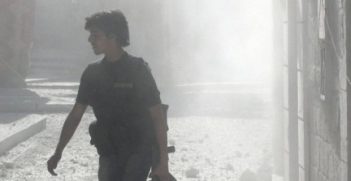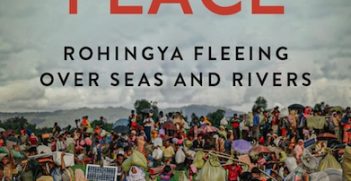The Australian Army from Whitlam to Howard

After Anzac Day commemorations, it’s worth remembering the inspirational stories of the Army’s recent history.
John Blaxland has written an informative history of the Australian Army’s development and operations from the election of the Whitlam Government in 1972 to the defeat of the Howard Government in 2007. He meticulously details a chronological account of the diverse and widespread operations in what military historian David Horner states ‘is the first comprehensive account of what the Australian Army has been doing since 1972’. Blaxland explains that while Australian efforts in the two world wars, Korea and Vietnam have provided inspiration to the current generation of soldiers, many less well-known military operations conducted during the period 1972-2007 have also presented such inspiration, and the accounts of these missions need to be documented. As an experienced historian and a former army officer, John Blaxland is well equipped with first-hand military experience combined with scholarly training to produce such a detailed account of the Australian Army’s most recent history. The contemporary nature of the book means that most government records on this subject remain closed to the public and Blaxland has had to rely largely on an extensive range of secondary sources supplemented with correspondence and interviews. The lack of declassified government material therefore restricts in-depth coverage of political analysis and policy debates during the period covered; however, the reliance on first-hand responses from participants has helped shaped Blaxland’s work into a detailed account of what the Australian Army achieved on the ground in the many military operations in which it was involved. These operations are presented in the book chronologically and regionally: Vietnam to East Timor (1972-1999); land force operations in East Timor and the Solomon Islands (1999-2007); Middle East area operations (2001-2006); and engagement in the Asia-Pacific (2000-2007). These chapters include joint military exercises, peacekeeping and humanitarian assistance missions as well as land force operations.
The book reveals the broad the range of military operations during the period covered, from peacekeeping operations to disaster relief efforts. The great variety of missions documented draw attention to the evolution of the army’s role from the final years of the Cold War into the early 21st Century. The book is heavy on detail, but this makes it an extremely useful reference source for anyone interested in the contemporary role of the Australian Army. In particular, it stresses how busy the Australian Army became by the late 1990s. With 1999-2007 bringing a period of operational activity ‘unmatched since the Second World War’ (p.142) with units and sub-units being deployed around the globe, including East Timor, Solomon Islands, Indonesia, Papua New Guinea, Tonga, Iraq, Afghanistan and Lebanon.
In addition to the extensive coverage of the military operations, Blaxland provides an overarching argument, claiming that the Australian Army adapted successfully to government policy changes throughout this period; and he provides a good overview of the challenges that these policies presented the army, especially in the face of changing strategic focus. He thus presents five reasons for the Australian Army’s successful adaptation; the creation of individual training and education institutions; collective field training exercises, regimental or corps identity; relationships with close allies and regional partners; and the army’s links with Australian society. These ‘reasons for prowess’ (pp.7-15) were implemented while Australia’s strategic positions went from one of ‘forward defence’ to that ‘defence of Australia’ in the post-Vietnam War era and then back to a ‘forward defence’ mindset, after the events of 11 September 2001. Of this latter position, Blaxland states: ‘operations in the Middle East, however, exposed a historically deep-seated impulse to remain active far beyond Australia’s shores’ (p.210). However, in contrast to Australia’s focus on the Middle East in the 20th Century, by the early 21st Century, Australia no longer relied on the mass mobilisation of troops.
This book is an essential reference source for anyone interested in the evolution of the contemporary Australian Army. Added bonuses are the inclusion of photographs and a complete list of operations. John Blaxland should be commended for the level of detail and extensive coverage that he has provided on an important period of Australian military history.
John Blaxland, The Australian Army from Whitlam to Howard (Cambridge, 2013)
Sue Thompson is a lecturer at the National Security College, Australian National University. This article is published under a Creative Commons Licence and may be republished with attribution.





